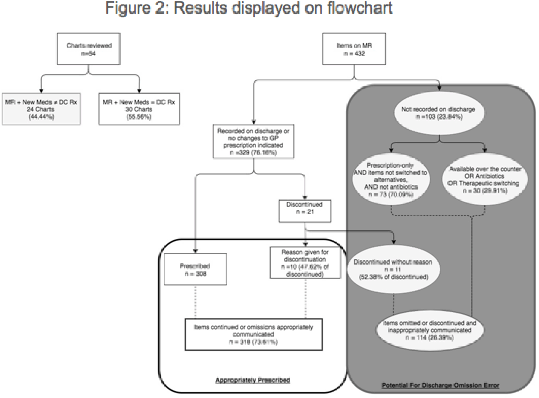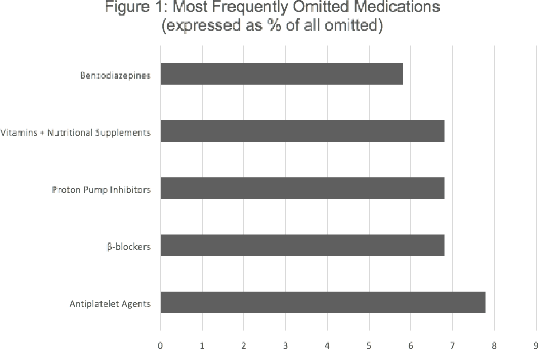Print version
Search Pub Med
| 231P London, UK Pharmacology 2017 |
Quantifying discharge prescription omission error in an irish university teaching hospital
Introduction: Discharge prescribing error is well researched in Irish hospitals(1-5). Errors, such as omission of medications at discharge and prescribing chronic medications discontinued during inpatient stay, often persist into primary care(5). Saint James’s Hospital (SJH) is a tertiary referral centre. In SJH, medicine reconciliation (MR) takes place at admission. Discharge prescriptions should note all pre-admission medications (PAM) which are discontinued during inpatient stay. There is no e-prescribing system in SJH. Research conducted in the SJH Acute Medical Assessment Unit verifies MR at discharge prevents error. It is not consistently provided(1,4). This study identifies PAM which have not been prescribed or noted as discontinued on discharge prescription or electronic discharge summary to quantify communication deficit in transition of care.
Methods: Patients’ medical charts were reviewed at discharge using convenience sampling in August and September, 2017. Patients receiving ≥1 medication prior to admission were included. Handwritten MR at admission was compared to handwritten discharge prescription and electronic discharge summary, and discrepancies noted. Both have a section for discontinued medications. Where a prescription noted no PAM were changed during inpatient stay, no error was recorded. Where all PAM were neglected from a prescription, no error was recorded (assumed supplemental to primary care).
Results: 44.44% (24) of patients experienced PAM omission on discharge (n=54). Of the 432 medications recorded on MR, 103 (23.84%) were excluded from discharge prescription without being discontinued, of which 29.91% were replaced by a medication with the same mechanism of action, or were available over the counter (see figure 2). Omission of medications at discharge occurs frequently (23.84%) in SJH. When medications are discontinued, they often (52.8%) don’t include reasons for discontinuation. This type of omission generates error in primary care(5).
Conclusion: Medications are frequently omitted from discharge records. They may be discontinued for legitimate reasons or therapeutic switching. However, lack of documentation means that intentions of teams in SJH are not apparent to their colleagues in primary care.


References:
(1) Grimes TC et al. (2011) Br J Clin Pharmacol. 71:449-57.
(2) Grimes TC et al. (2014) BMJ quality & safety. 23:574-83
(3) Holland DM (2015). Int J Clin Pharm. 37:310-9
(4) Gavin C. (2016) Thesis for MSc Clin Pharm, University College Cork.
(5) O'Riordan et al.(2016) Int J Clin Pharm. 38:1172-81.

